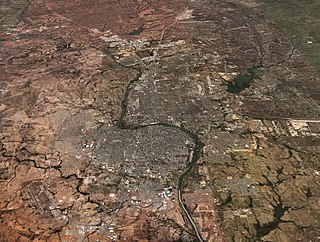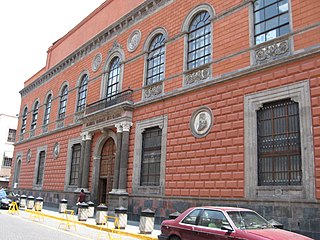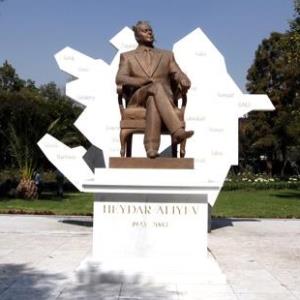Related Research Articles

Columbus Day is a national holiday in many countries of the Americas and elsewhere, and a federal holiday in the United States, which officially celebrates the anniversary of Christopher Columbus's arrival in the Americas. Columbus went ashore at Guanahaní, an island in the Bahamas, on October 12, 1492.

Juan de Oñate y Salazar was a Novohispanic conquistador from New Spain, explorer, and colonial governor of the province of Santa Fe de Nuevo México in the viceroyalty of New Spain. He led early Spanish expeditions to the Great Plains and Lower Colorado River Valley, encountering numerous indigenous tribes in their homelands there. Oñate founded settlements in the province, now in the Southwestern United States.

The Adams–Onís Treaty of 1819, also known as the Transcontinental Treaty, the Spanish Cession, the Florida Purchase Treaty, or the Florida Treaty, was a treaty between the United States and Spain in 1819 that ceded Florida to the U.S. and defined the boundary between the U.S. and Mexico. It settled a standing border dispute between the two countries and was considered a triumph of American diplomacy. It came during the successful Latin American wars of independence against Spain.

The Lower Rio Grande Valley, commonly known as the Rio Grande Valley or locally as the Valley or RGV, is a region spanning the border of Texas and Mexico located in a floodplain of the Rio Grande near its mouth. The region includes the southernmost tip of South Texas and a portion of northern Tamaulipas, Mexico. It consists of the Brownsville, Harlingen, Weslaco, Pharr, McAllen, Edinburg, Mission, San Juan, and Rio Grande City metropolitan areas in the United States and the Matamoros, Río Bravo, and Reynosa metropolitan areas in Mexico. The area is generally bilingual in English and Spanish, with a fair amount of Spanglish due to the region's diverse history and transborder agglomerations It is home to some of the poorest cities in the nation, as well as many unincorporated, persistent poverty communities called colonias. A large seasonal influx occurs of "winter Texans" — people who come down from the north for the winter and then return north before summer arrives.
Huitzilac is a city in the Mexican state of Morelos. It stands at 19°01′42″N99°16′02″W and at an altitude of 2,561 m (8,402 ft) above sea level.

Temixco is the fourth-largest city in the Mexican state of Morelos. It stands at 18°51′N99°14′W in the west-northwest part of the state.

Bernardo Vicente de Gálvez y Madrid, 1st Count of Gálvez was a Spanish military leader and government official who served as colonial governor of Spanish Louisiana and Cuba, and later as Viceroy of New Spain.

The Mexican Football Federation is the governing body of association football in Mexico. It administers the Mexico national team, the Liga MX and all affiliated amateur sectors, and controls promoting, organizing, directing, expanding, and supervising competitive football in Mexico.

Pompeo Luigi Coppini was an Italian born sculptor who emigrated to the United States. Although his works can be found in Italy, Mexico and a number of U.S. states, the majority of his work can be found in Texas. He is particularly famous for the Alamo Plaza work, Spirit of Sacrifice, a.k.a. The Alamo Cenotaph, as well as numerous statues honoring Texan figures.

Laredo–Nuevo Laredo is one of six transborder agglomerations along the U.S.-Mexican border. The city of Laredo is situated in the U.S. state of Texas on the northern bank of the Rio Grande and Nuevo Laredo is located in the Mexican State of Tamaulipas in the southern bank of the river. This area is also known as the Two Laredos or the Laredo Borderplex. The area is made up of one county: Webb County in Texas and three municipalities: Nuevo Laredo Municipality in Tamaulipas, Hidalgo Municipality in Coahuila, Anáhuac Municipality in Nuevo León in Mexico. Two urban areas: the Laredo Metropolitan Statistical Area and the Zona Metropolitana Nuevo Laredo three cities and 12 towns make the Laredo–Nuevo Laredo Metropolitan area which has a total of 636,516 inhabitants according to the INEGI Census of 2010 and the United States Census estimate of 2010. The Laredo–Nuevo Laredo is connected by four International Bridges and an International Railway Bridge. According to World Gazetteer this urban agglomeration ranked 157th largest in North and South America in 2010 with an estimated population of 675,481. This area ranks 66th in the United States and 23rd in Mexico.

The Faculty of Arts and Design, is a college of art in Xochimilco, Mexico City. The school is part the Universidad Nacional Autónoma de México, and is responsible for teaching painting, sculpture and graphic design, with undergraduate and graduate studies in San Carlos. It is regarded as one of the best art schools in Mexico.

The José Luis Cuevas Museum is located just off the Zócalo within the Historic center of Mexico City, in Mexico City, Mexico. The museum and Church of Santa Inés were built as parts of the Convent of Santa Inés complex. The museum is in the convent's colonial era residential hall.

The Academy of San Carlos is located at 22 Academia Street in just northeast of the main plaza of Mexico City. It was the first major art academy and the first art museum in the Americas. It was founded in 1781 as the School of Engraving and moved to the Academia Street location about 10 years later. It emphasized classical European training until the early 20th century, when it shifted to a more modern perspective. At this time, it also integrated with the National Autonomous University of Mexico, eventually becoming the Faculty of Arts and Design, which is based in Xochimilco. Currently, only graduate courses of the modern school are given in the original academy building.

Tlaxcoaque is a plaza located in the historic center of Mexico City which has given its name to both the 17th-century church that is on it and the blocks that surround it. Historically this plaza and the church that sits on it have marked the southern edge of Mexico City, and today it is on the border of the historic center and Colonia Obrera. The church and plaza are somewhat isolated from the rest of the center due to the construction of wide streets, such as 20 de Noviembre and Fray Servando Teresa de Mier, that separate them from the surrounding buildings. Another notable building in this area is the police surveillance station, which was infamous in the 1970s as a place where detainees were tortured. This stopped after the 1985 Mexico City earthquake exposed handcuffed bodies which had evidence of torture on them. Today, the area around this plaza is semi-deserted outside of work hours and is considered to be a high-crime area. The church itself has experienced break-ins.

The Mexico City trolleybus system serves Mexico City, the capital city of Mexico, and is operated by Servicio de Transportes Eléctricos.

A 1926–27 statue of George Washington by Italian American artist Pompeo Coppini, sometimes called George Washington, was installed in northeast Portland, Oregon, United States. The bronze sculpture was the second of three statues of Washington by the artist, following a similar statue installed in Mexico City in 1912 and preceding another installed on the University of Texas at Austin campus in February 1955. The Portland statue was created to commemorate the 1926 sesquicentennial of the Declaration of Independence and dedicated in 1927. It was part of the City of Portland and Multnomah County Public Art Collection courtesy of the Regional Arts & Culture Council. In June 2020, it was toppled by protestors.

George Washington is an outdoor 1955 bronze sculpture by Italian American artist Pompeo Coppini, located on the University of Texas at Austin campus in Austin, Texas, in the United States.

The statue of Heydar Aliyev is a bronze sculpture of the third president of Azerbaijan, Heydar Aliyev, previously installed along Paseo de la Reforma, in Chapultepec, Miguel Hidalgo, Mexico City.

The Monumento Encuentro refers to two bronze statues seated on a bench in Colonia Tabacalera, Cuauhtémoc, Mexico City. Otherwise known as the bench of Fidel Castro and Che Guevara and the statues of Fidel Castro and Che Guevara, the artwork features sitting statues of Fidel Castro and Che Guevara, major figures of the Cuban Revolution (1953–1959). The monument references the first time both met in 1955 in Tabacalera.
References
- ↑ "George Washington Statue · Attractions". cdmxtravel.com. Secretaría de Turismo de CDMX. Retrieved 2020-06-19.
- 1 2 "George Washington Statue". Mexico City Travel. Retrieved 2020-06-19.
- ↑ Gamboa Sánchez, Bernardo (2019-08-20). "Ruta por la Segunda Sección del Bosque de Chapultepec (para leer y caminar y ya)". local.mx (in Mexican Spanish). Retrieved 2020-06-19.
- ↑ "Texas' Unlucky Sculptor". Texas Co-op Power Magazine. Retrieved 2020-06-19.
- ↑ Villasana, Carlos; Gómez, Ruth (2019-07-26). "Washington en la capital, símbolo de amistad". El Universal (in Spanish). Retrieved 2020-06-19.
19°25′11″N99°12′05″W / 19.4198°N 99.2014°W